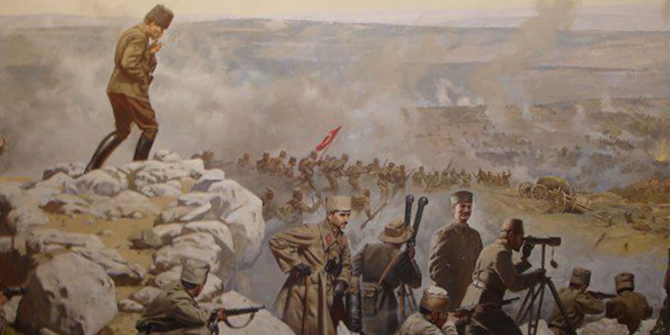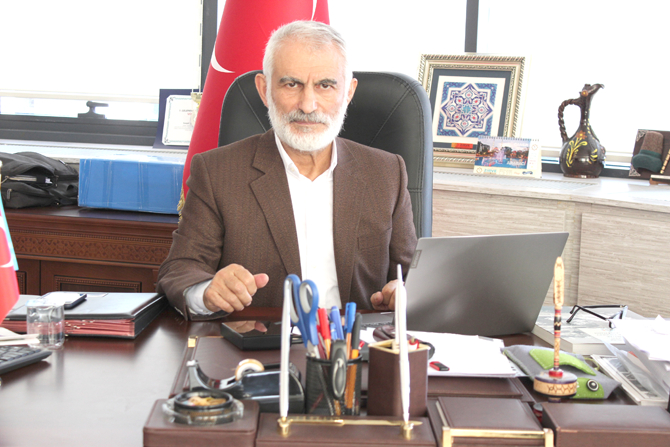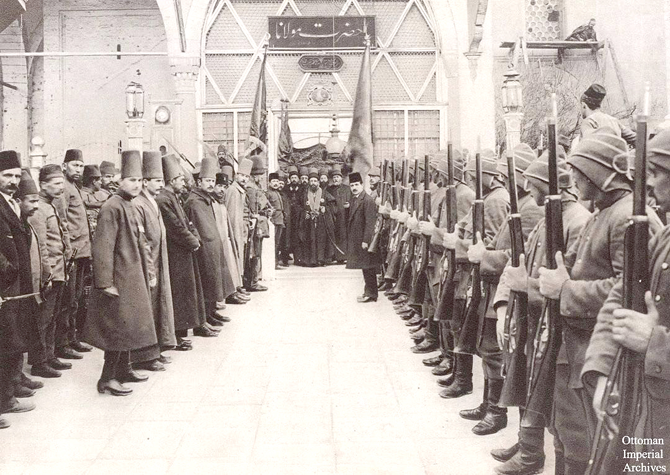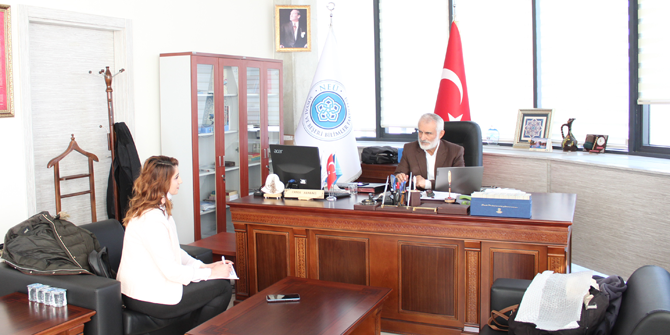Spiritual support to world war one for mevlevi dervish
The participation of the Mevlevi Regiment in the First World War is among the events that are little known.

The participation of the Mevlevi Regiment in the First World War is among the events that are little known. Necmettin Erbakan University Faculty of Social and Human Sciences Dean and History Department Lecturer Dr. Caner Arabacı, stated that they participated in giving information about this event, and giving moral support to the warring soldiers.
In historical sources, it is written that Sultan Reşad, who was the sultan of the period, gave importance to the spiritual support of the Mevlevi dervishes and invited them to the war thinking that they found it beneficial for them to participate in the war. Caner Arabacı said, "We fought at the Dardanelles Front, Syria-Palestine Front, Caucasian Front, Iran Front, Iraqi Front, Yemen Front, Galicia, Romania, Macedonia Fronts in total. We did not have shipments like Galicia, Romania and Macedonia Fronts. "We also fought, and one hundred and one thousand soldiers remained in the army."

‘FIRST WORLD WAR IS A WAR OF BONE’
Noting that the Mevlevi dervishes participated in the war in the First World War, they supported the army, in order to address it in the context of Greeting World War, Prof. Dr. Caner Arabacı said, "The First World War is not our war, it is a war of Europe. It is an imperialist war. It is not a noble four war like defending the homeland, nation, defending chastity and honor, defending the state. It is almost a war of bones. In this war, we should not have been ours, but we were forced to enter. As such, the war eventually turned on us. The war turned into a life-and-death struggle for us. When the war turned into a war of life and death, all the forces at hand had to be mobilized. The Fatwa of Jihad was declared. The Ottoman Empire had nearly three million soldiers. But this military power was not sufficient.
‘ITEMS THAT WILL BE MORAL TO THE ARMY’
Arabacı said that during the First World War, the army would be morale, a spiritual practice would be found, and encouraging elements were also considered, "There were ehl-i tarik groups among the incentives. Ehl-i tarik people, before, from time to time alongside the sultans and their armies. Well-known opinion leaders made campaigns to boost the morale of the soldiers with the meaning of “We are here too.” During the First World War, which was a final war, they made use of the talented groups such as Mevlevi, Bektashi, Kadiriler, Nakşiler. to give moral to the soldiers, they stopped at places close to the front. at the time I did not like the army Ottoman army today the Republic of Turkey. There are current morale officer in the army. at that time, soldiers woman instead of the morale officer, ridicule muftis, has held senior positions clergy in the army as battalion imams. An officer who gives fatwa in military units and allows the soldier to pray In the people. In addition to them, ehl-i tarik groups also joined. The Mevlevi dervishes participated in the First World War not as a military class, warrior or combatant, but as a spiritual contribution and morale type.

‘THE PADİŞAH OF THE ERA IS ALSO MEVLEVI’
Arabacı, who informed that Sultan Mehmed Reşat, the sultan of that period, was also the Mevlevi, said: “When the sultans have changed recently, the sword is the Mevlevi Sheikh who surrounded the sword in the siege ceremonies. The center of Mevlevi is also in Konya. In the World Mevlevi order, the Mevlevi dervishes were opened in the Balkans, Africa, the Middle East, that is, in everywhere in the Ottoman geography. The sheikhs of the Mevlevihane were also appointed from Konya. The assignments were made over the Mevlevi Postnish in Konya. For this reason, it has become a special place of Konya and the Konya Mevlevi Lodge / Lodge / center. The preparations of the Mevlevi regiment in Istanbul were made and gathered in Konya with those coming from other places. Other sects also joined the expedition. The most famous are the Bektashis sent to the Caucasus by the Mevlevi Regiment sent to Syria. The Regiment flag was drawn in Konya and a regiment was formed. At the head of the regiment is Veled Çelebi (İzbudak). Veled Çelebi; he is a poet, a writer, a linguistic sheikh. He is also the leader, sheikh and postnish of all the Mevlevi and the Mevlevi regiment. It is also close to the ruling party of the time, Ittihat ve Terakki. "

'APPROXIMATELY THOUSAND MOROCCO TULIP JOINED THE WAR'
Arabacı, who added that Veled Çelebi was overthrown when the Committee of Union and Progress was overthrown, said, "The Sheikh of that time was Veled Çelebi. Under his leadership, he was given the title of a colonel as a representative and was sent off from Konya. They go to Damascus and there is the Fourth Army. The Commander of the Fourth Army is Cemal Pasha. He is the third of the three leaders of the Committee of Union and Progress. He was both the Minister of Navy / Maritime Affairs of the period, the Commander of the Fourth Army and the Governor of Syria. He is an authoritarian, despotic man. They stay with him in Damascus. From time to time, they perform Mevlevi rituals and musical feasts. They stayed in Damascus for three years. During this process, they helped military units and some rear-front services and tried to give morale. Although they received weapon training and military training, they were not in a de facto hot war due to their age. During the First World War, there are about one thousand Mevlevi dervishes who participated in the expedition. There are a symbolic place for a thousand people in the army, with nearly three million people. According to the figures given, around forty-seven dervishes from the Mevlevihane were added ”.

‘MEVLEVİHANELER WERE LOCATED IN THE TEKKE AND THE ZAVIYE’
Stating that the Mevlevihane was in the position of lodges and lodges at that time, Arabacı said, “We know that Mustafa Kemal visited Mevlevihane during his Konya visits. It also has a connection with the Mevlevihane from Thessaloniki. Mevlevihane is where music and conversation are. Let's say, Kadiri, Nakşi, Halidi are places where meetings with men and women are held from time to time, according to similar places. A little more freely named themselves. The First President had such a connection with the city of Konya. Dervish lodges and lodges were closed in 1925. The Mevlevi lodges are also in the position of lodges and lodges. Konya was also closed due to its center being in Konya. Only Konya was privileged and this place was built as a museum. Even Mustafa Kemal Atatürk visited this place while he was a museum. Yusuf Akyurt, the director of the museum at that time, was a hard-working, scientific, and writer man. He even presented his works to Atatürk at that time and was appreciated. Yusuf Akyurt's work is also important in terms of Konya region and history. His regular efforts made him a worthy man. Thus, he concluded his words by saying that at that time Konya Mevlevihane was not completely closed and thrown into a corner, it was visited as a museum and a place where information was received ”.
SÜMEYRA KENESARI / YENİ HABER


